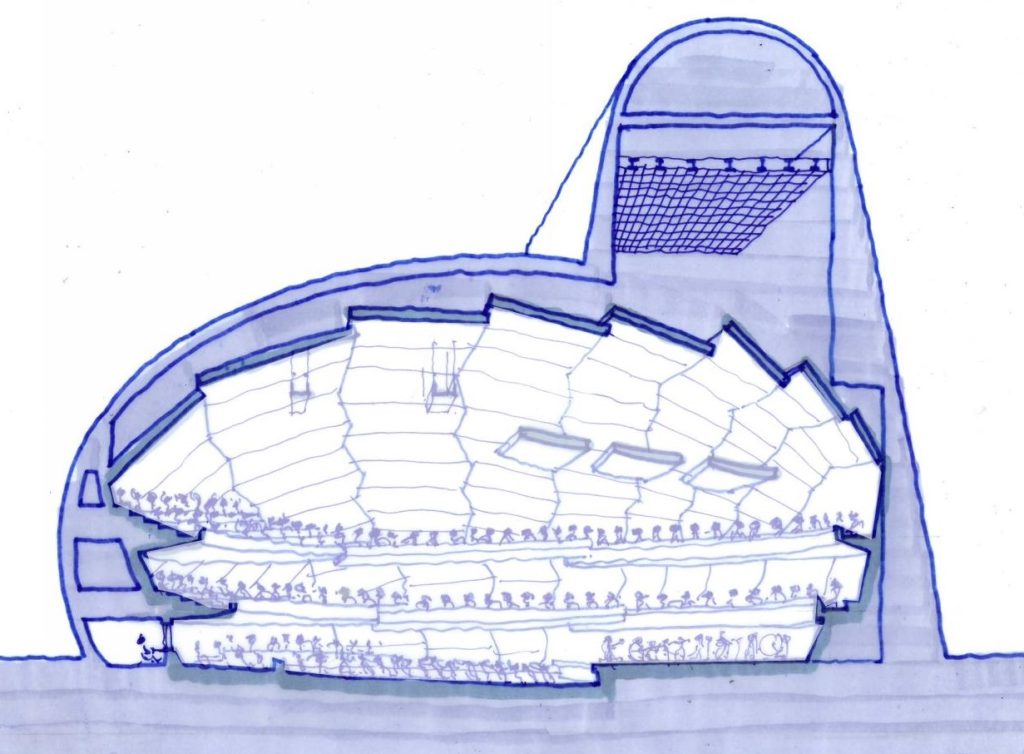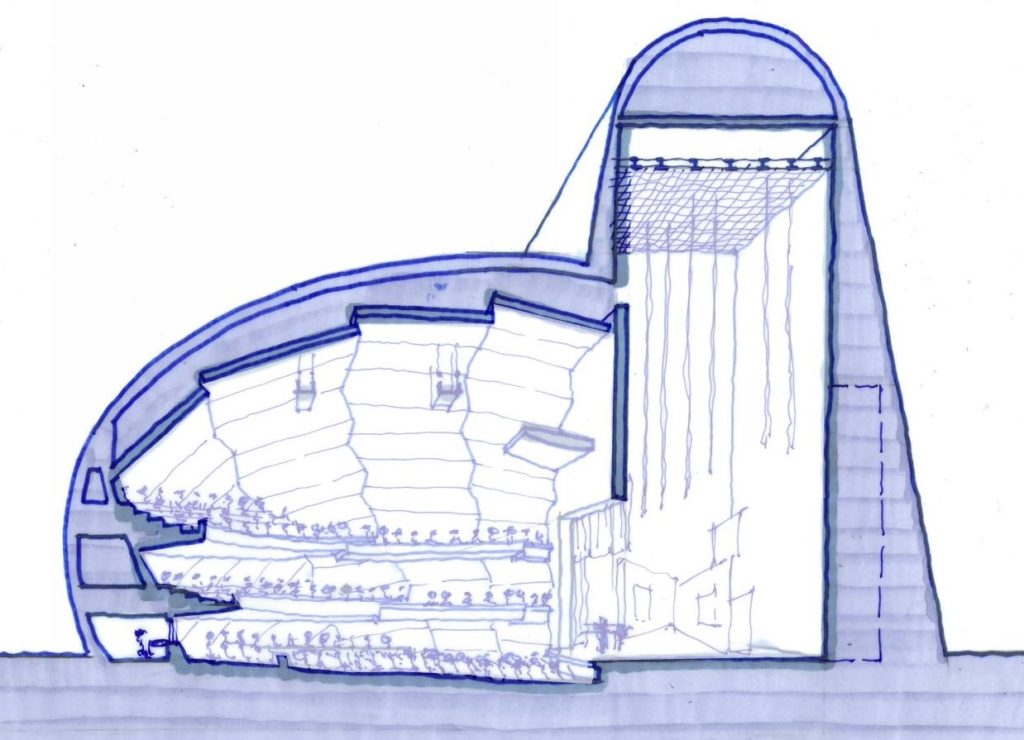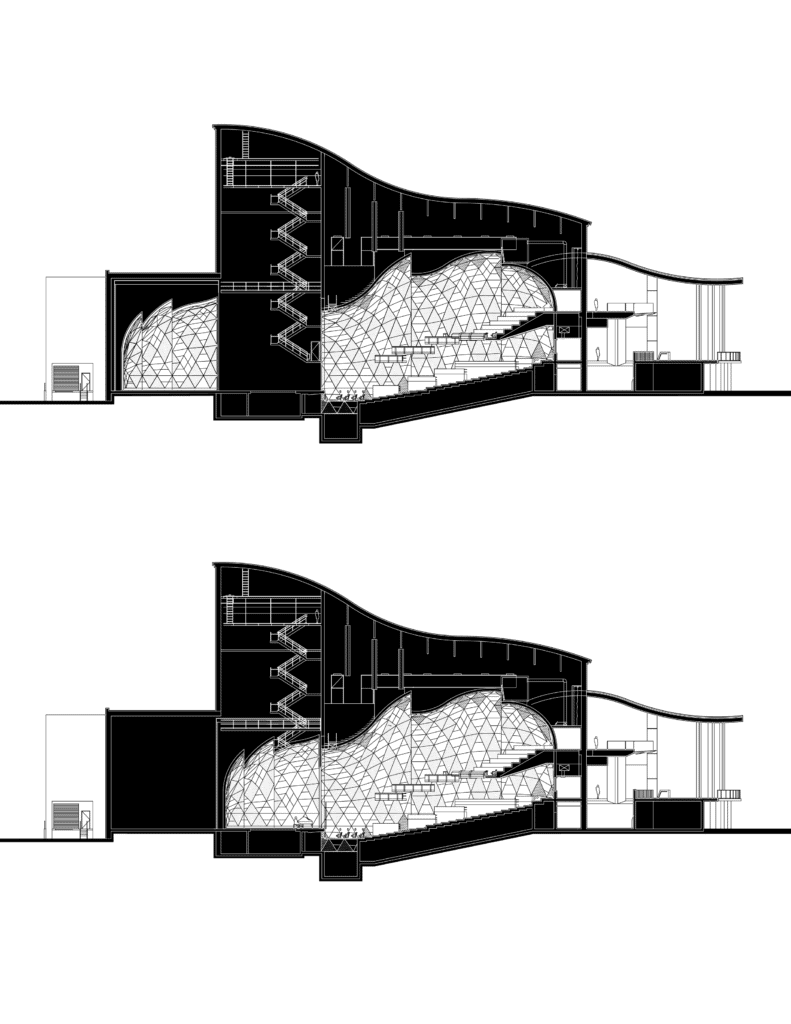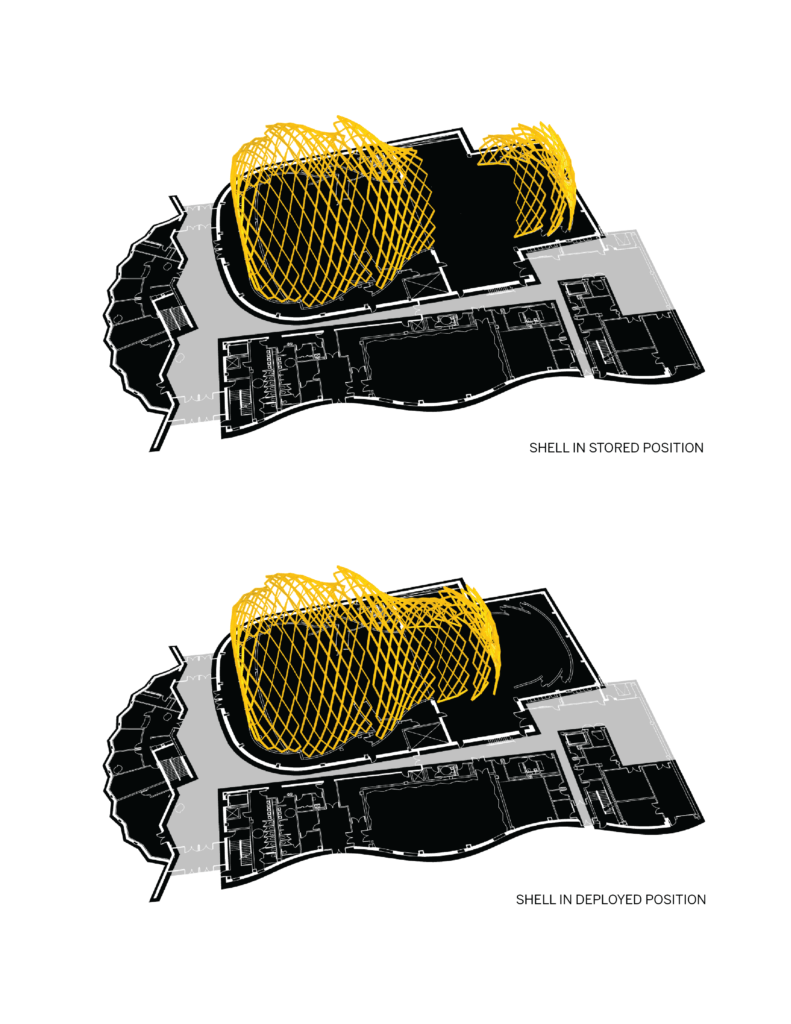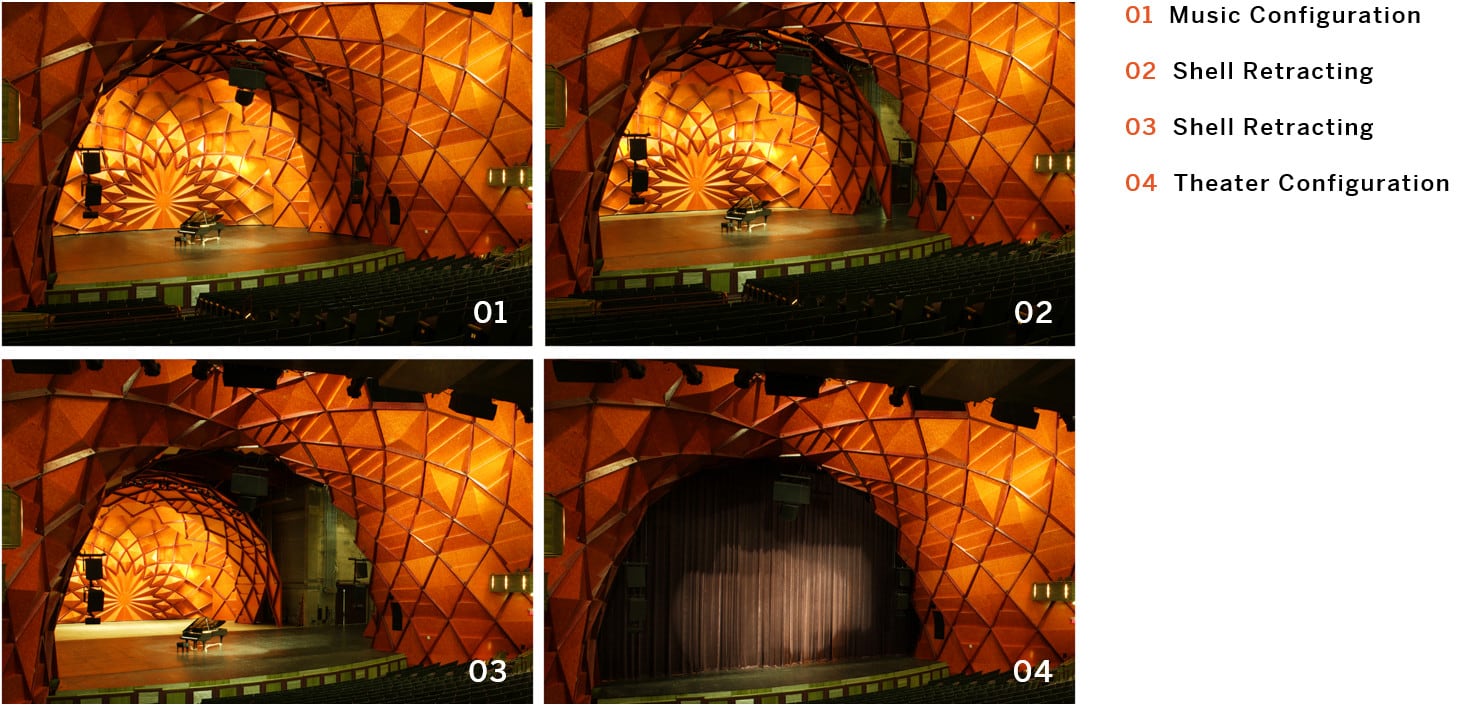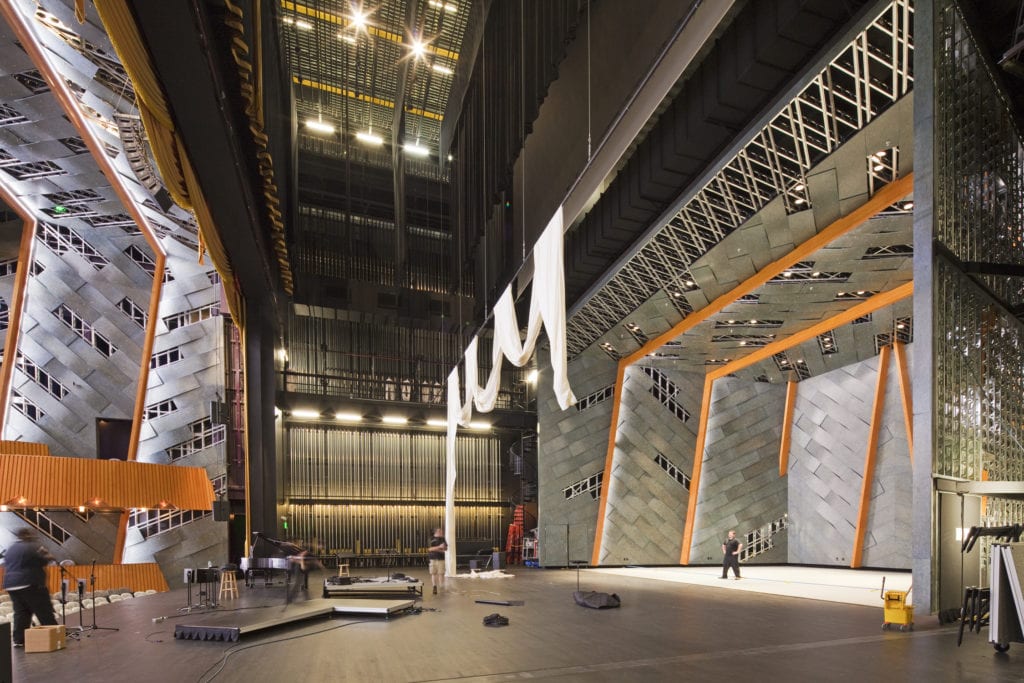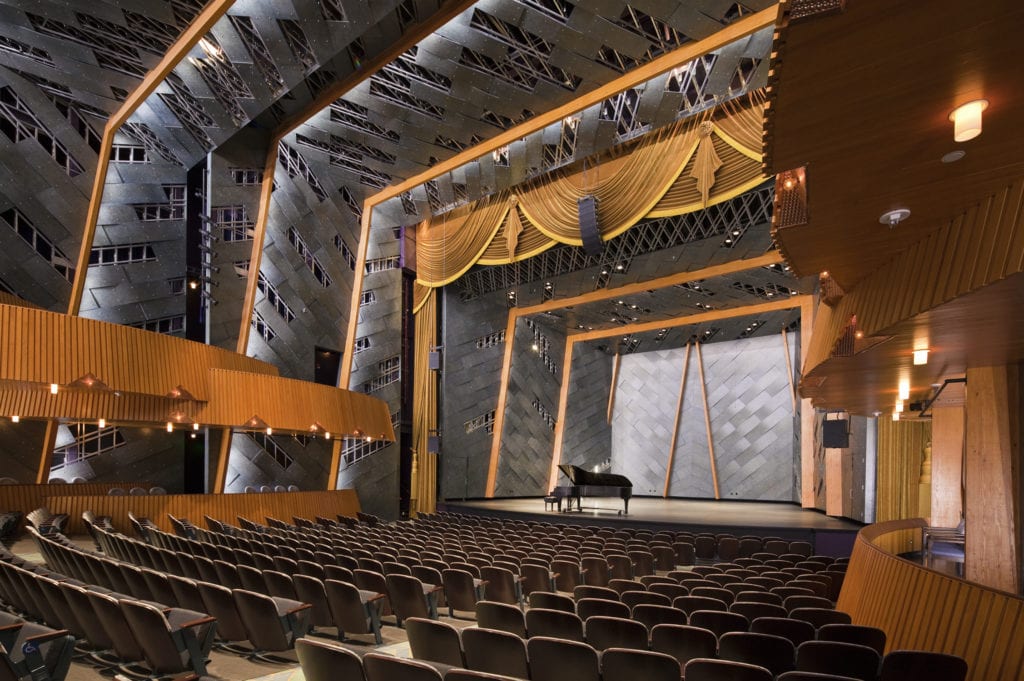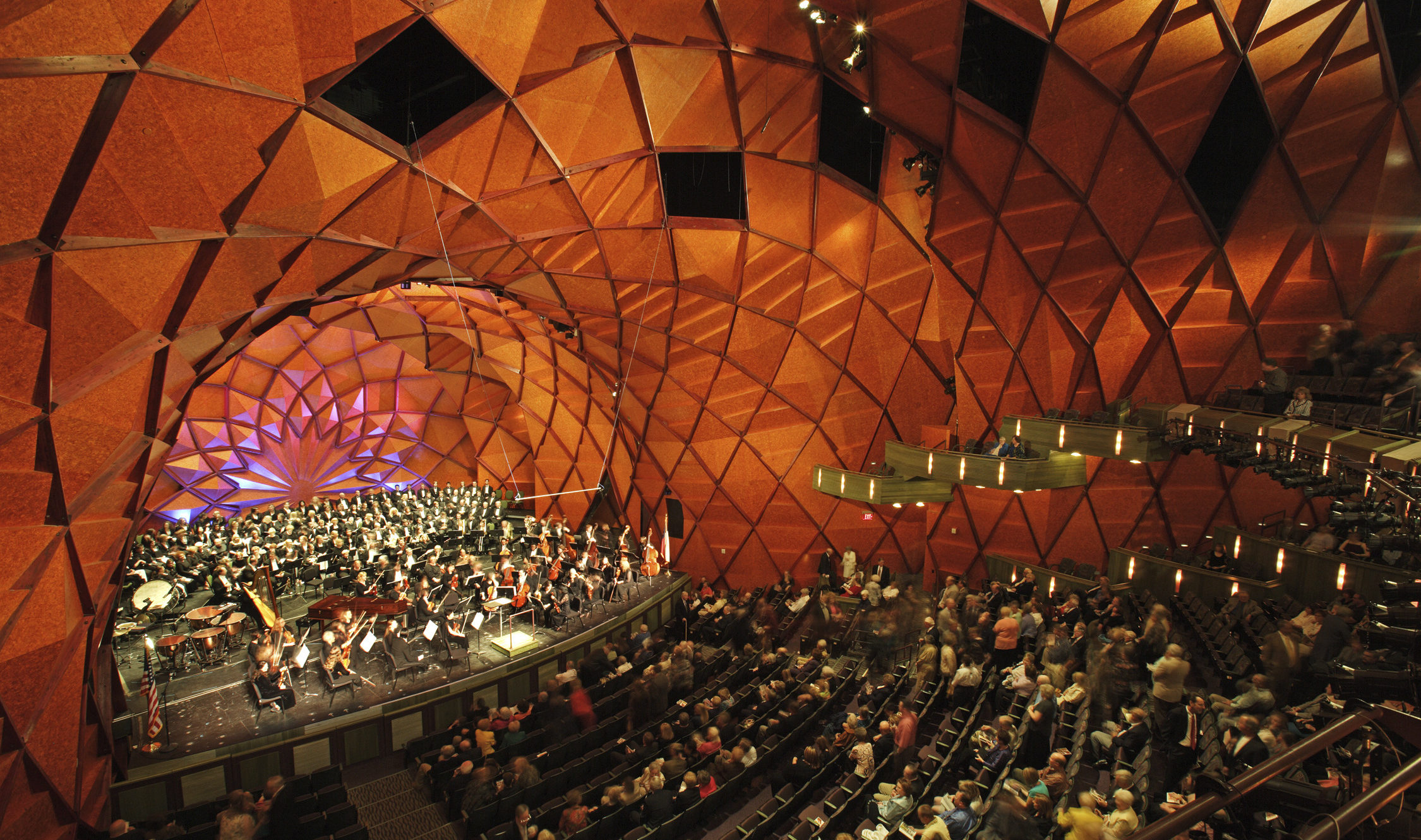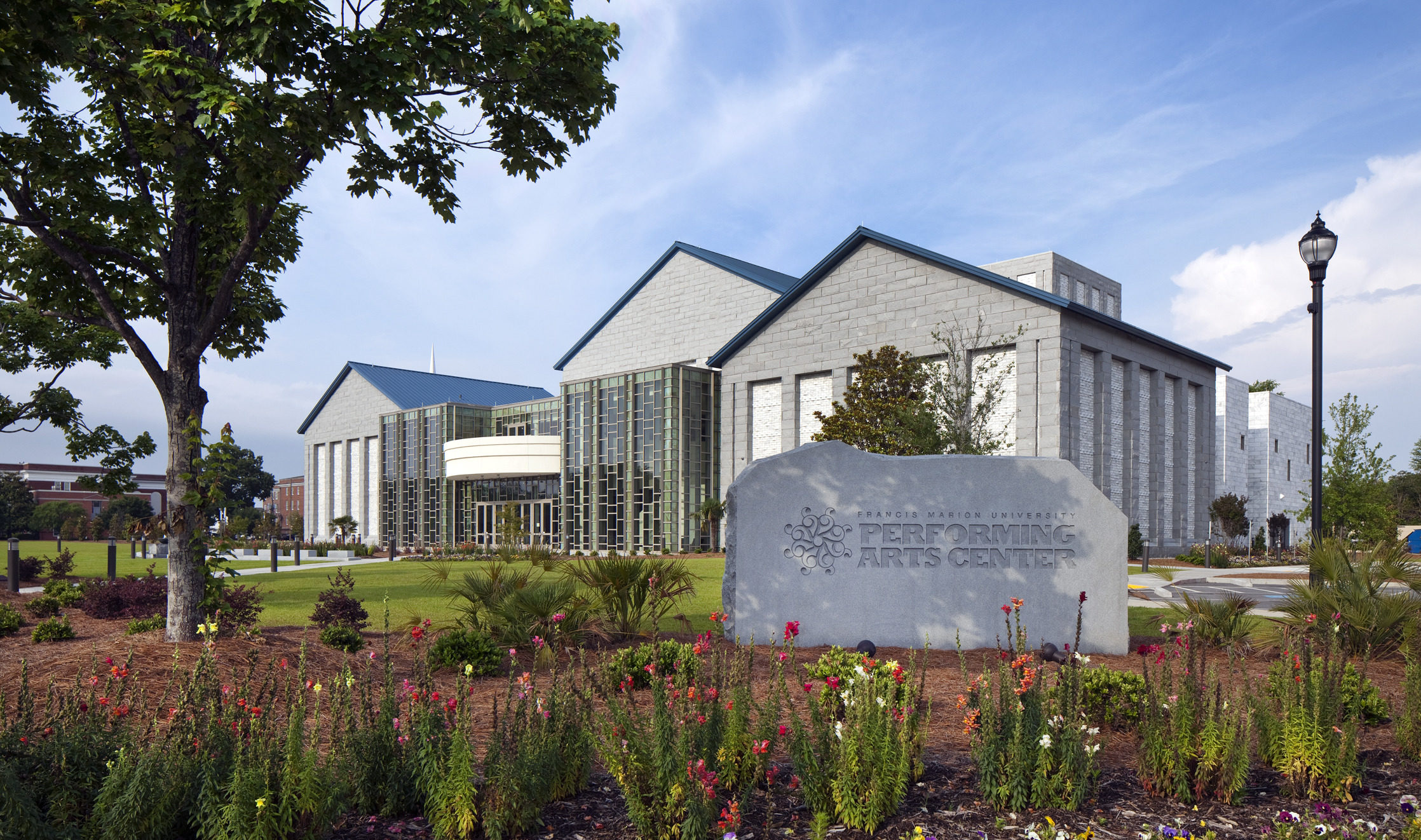Transforming Acoustical Space
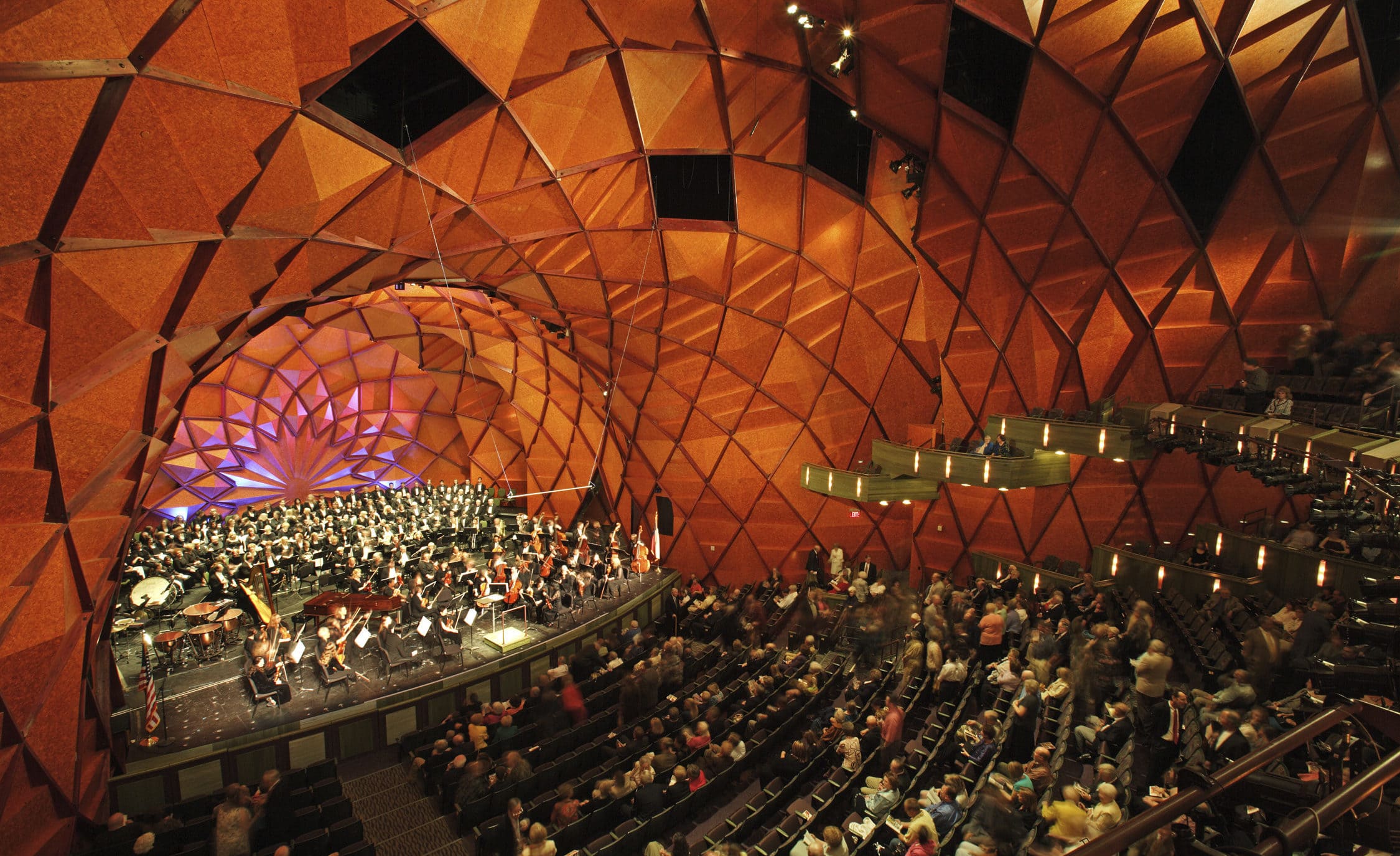
In creating spaces for the arts, we are often asked to design venues that can successfully accommodate a wide range of events from unamplified music to drama to highly amplified jazz or rock presentations. Each type of event has its special requirements for room volume, acoustical characteristics, and relationship of audience to performers. Over the last twenty years Steinberg Hart developed an innovative system that easily transforms the shape of venues in response to varying needs.
One Room; Two Rooms
Theater performances are typically presented in venues organized in two linked spaces: the audience area and the stage. A proscenium wall provides the dividing line between the two areas with the proscenium opening providing the connection. Alternatively, music-only venues often place the audience and the musicians in a single room filled with music. Most multi-use venues have been designed as two-volume proscenium spaces that can be adapted for music events. This transformation from a drama event one evening and an orchestral one the next, requires significant labor and time to move large acoustical panels that direct the sound and close off the large stagehouse space overhead.
Beginning in 2001 with the conceptual study for a 1,500-seat auditorium in Plano, Texas, Steinberg Hart proposed creating a single-room music auditorium that could be easily reshaped into a two-room proscenium venue for theater.
Click here to see the venue transform
Transforming Space
The transformation of a single-room music venue into a two-volume theater space was the central organizing idea for the Globe News Center for the Arts in Amarillo, Texas. The room-defining enclosure at the performance end of the room is configured as a large shell that retracts as a single unit into an adjoining garage. The shell, suspended from two large steel beams, can be moved in less than ten minutes by a single operator.
Click here to see the shell move
On Rollers
Like with Globe-News, the stage enclosure of the auditorium at the Francis Marion University Center for the Performing Arts can be moved offstage to facilitate a fully functioning stagehouse for theater events. This room differs from the Globe-News in two major ways. At Francis Marion, the room is designed primarily as a proscenium venue with fixed curtains defining the proscenium line. The shell is moved in to complete the full enclosure of the music room but the line of the proscenium remains visible. Unlike the Globe-News with its cable-suspended enclosure, the shell support at Francis Marion sits on large wheels that roll on embedded steel rails in the stage floor. The floor-supported shell allows for uninterrupted battens overhead for lighting fixtures, scenery, and curtains.
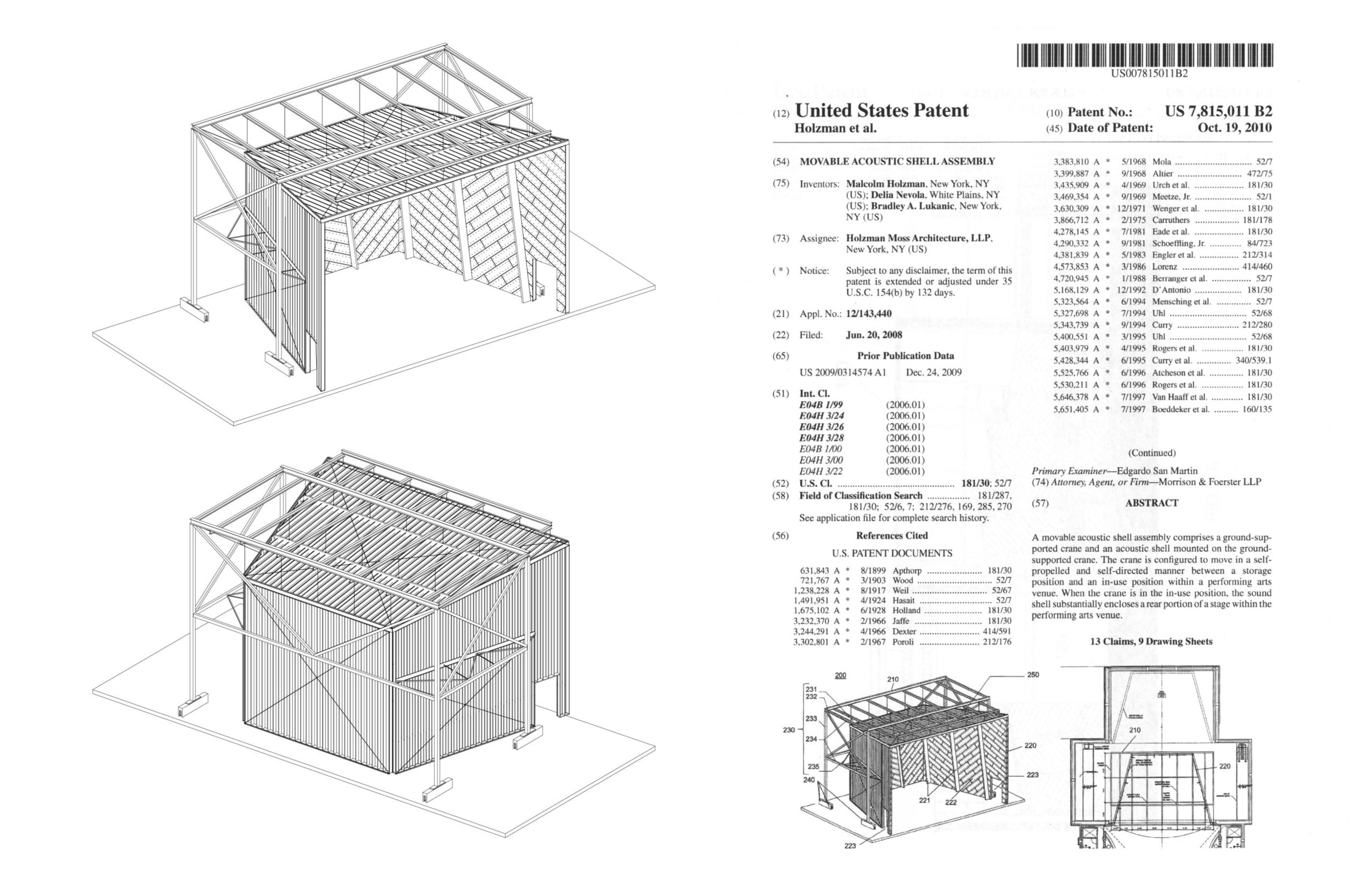
In 2010, the United States Patent Office issued a patent to Steinberg Hart’s “moveable acoustic shell assembly” based on the moveable shell developed for Francis Marion University.
